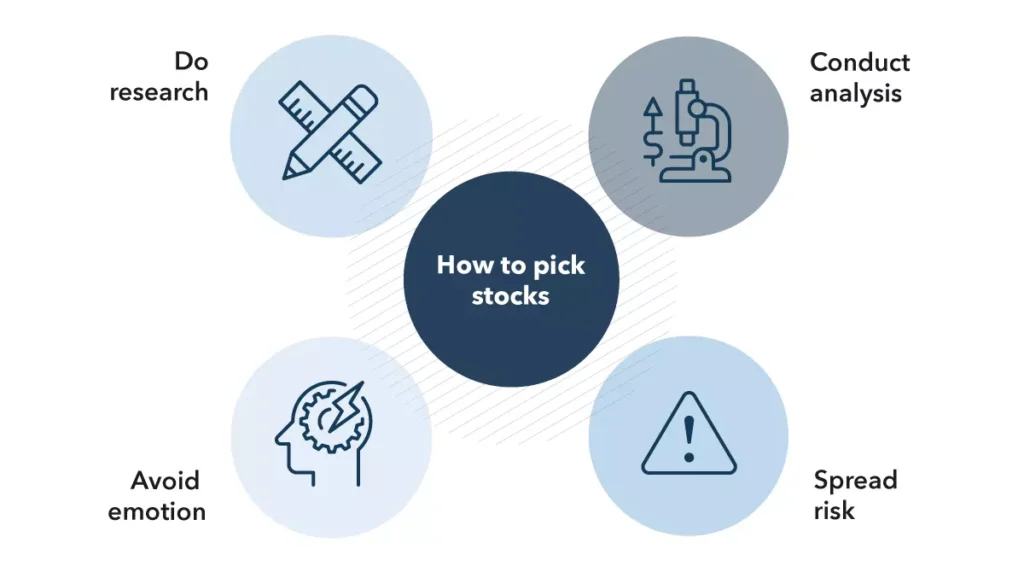Investing in stocks can be a rewarding way to grow your wealth, but it requires careful research and selection. In this fourth step of building a solid investment strategy, we will explore the key factors to consider when researching and choosing the best stocks for your portfolio.

Understanding Your Investment Goals
Before diving into stock selection, it is crucial to define your investment goals. Are you looking for long-term growth, passive income through dividends, or short-term gains? Your objectives will influence the types of stocks you should consider.
- Growth Investing: Focuses on companies with high revenue and earnings growth potential.
- Value Investing: Seeks undervalued stocks with strong fundamentals.
- Dividend Investing: Targets stocks that pay regular dividends for passive income.
- Defensive Investing: Prefers stable, low-volatility stocks that perform well in economic downturns.
Conducting Fundamental Analysis
Fundamental analysis involves evaluating a company’s financial health and market position. Here are some key metrics to examine:
1. Revenue and Earnings Growth
- Look at a company’s revenue and net income over the past few years.
- Consistent growth indicates strong business performance.
2. Price-to-Earnings (P/E) Ratio
- A lower P/E ratio suggests a stock may be undervalued compared to peers.
- A higher P/E ratio could indicate strong growth potential but also higher risk.
3. Price-to-Book (P/B) Ratio
- Compares a stock’s market value to its book value.
- A lower P/B ratio may indicate a good value investment.
4. Debt-to-Equity Ratio
- Measures financial leverage and stability.
- Lower debt levels suggest lower financial risk.
5. Dividend Yield and Payout Ratio
- Essential for income investors.
- A sustainable payout ratio (below 60%) is preferable.
Analyzing Market Trends and Industry Outlook
Researching broader market trends and industry performance is key to identifying stocks with strong potential. Consider the following:
- Industry Growth: Look for industries with increasing demand and technological innovation.
- Competitive Advantage: Choose companies with unique strengths, such as brand reputation, patents, or cost efficiencies.
- Economic Factors: Assess macroeconomic conditions, interest rates, and geopolitical risks affecting the stock market.
Utilizing Technical Analysis
Technical analysis helps investors identify optimal entry and exit points based on stock price movements. Some common indicators include:
- Moving Averages: Identify trends by analyzing 50-day and 200-day moving averages.
- Relative Strength Index (RSI): Measures whether a stock is overbought or oversold.
- Volume Trends: Increasing trading volume can signal strong investor interest.
Diversification and Risk Management
Diversifying your portfolio across different sectors and asset classes can reduce risk. Consider these strategies:
- Sector Diversification: Invest in multiple industries to protect against sector-specific downturns.
- Geographic Diversification: Include international stocks to hedge against domestic economic issues.
- Position Sizing: Avoid overconcentrating in a single stock to minimize risk.
Using Stock Screeners and Research Tools
Leverage online stock screeners and financial research platforms to streamline your stock selection process. Some popular tools include:
- Yahoo Finance: Provides financial data, stock charts, and news.
- Morningstar: Offers in-depth stock analysis and ratings.
- Seeking Alpha: Features investor opinions and research articles.
- Finviz: A powerful stock screening tool.
Conclusion
Researching and selecting the best stocks for your portfolio requires a strategic approach. By understanding your investment goals, conducting fundamental and technical analysis, and diversifying your investments, you can make informed decisions to build a strong and resilient portfolio. Consistently reviewing market trends and utilizing research tools will further enhance your ability to choose the best stocks for long-term success.
Read More: https://wealthfitlife.com/step-3-to-start-investing-in-the-stock-market/
Frequently Asked Questions (FAQs)
1. What is the best way to start researching stocks?
Begin with fundamental analysis, evaluating financial health, industry trends, and company growth potential.
2. How do I know if a stock is overvalued or undervalued?
Look at valuation metrics like the P/E ratio, P/B ratio, and earnings growth compared to industry peers.
3. What is the difference between fundamental and technical analysis?
Fundamental analysis evaluates a company’s financials and business model, while technical analysis focuses on price movements and trends.
4. Should I diversify my portfolio?
Yes, diversification helps reduce risk by spreading investments across different sectors and asset classes.
5. How often should I review my stock portfolio?
It’s best to review your portfolio quarterly or whenever significant market changes occur.
6. What are the risks of investing in stocks?
Risks include market volatility, economic downturns, company-specific risks, and changes in interest rates.
7. How do I find high-quality dividend stocks?
Look for companies with strong cash flow, a history of consistent dividends, and a sustainable payout ratio.
8. Is it better to invest in individual stocks or ETFs?
ETFs offer diversification and lower risk, while individual stocks can provide higher returns but require more research.
9. What factors indicate a stock’s long-term potential?
Consistent revenue growth, strong management, a competitive edge, and industry leadership are key indicators.
10. Can I invest in stocks with a small budget?
Yes, fractional shares and commission-free trading platforms allow small investments in high-quality stocks.
